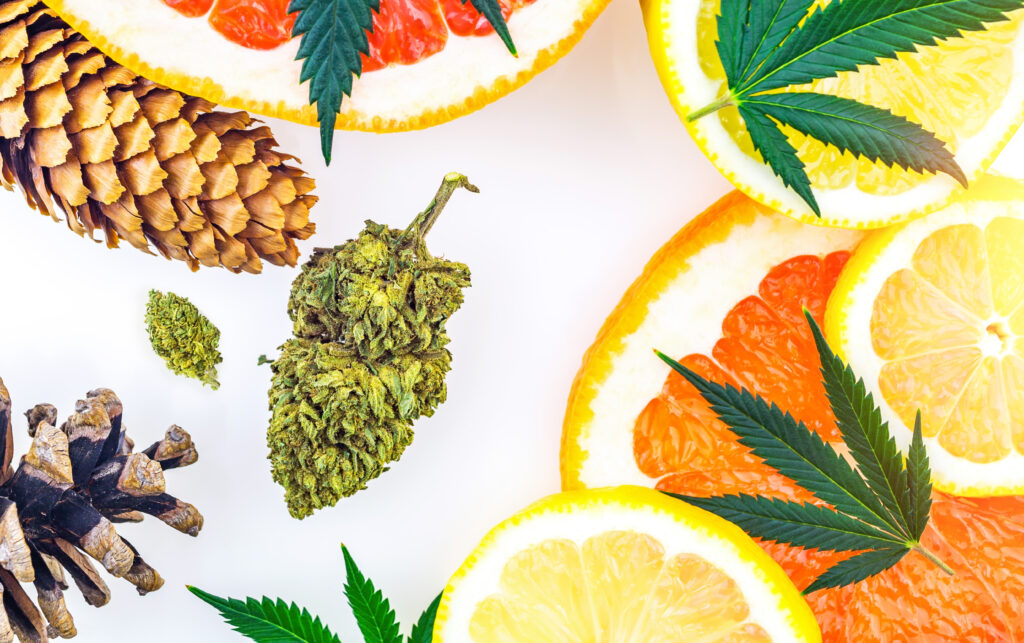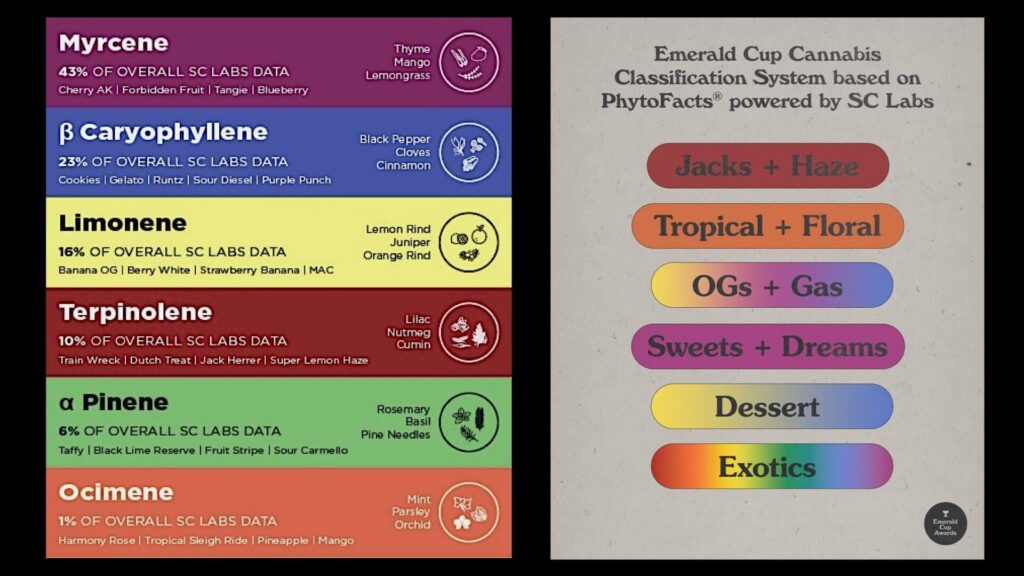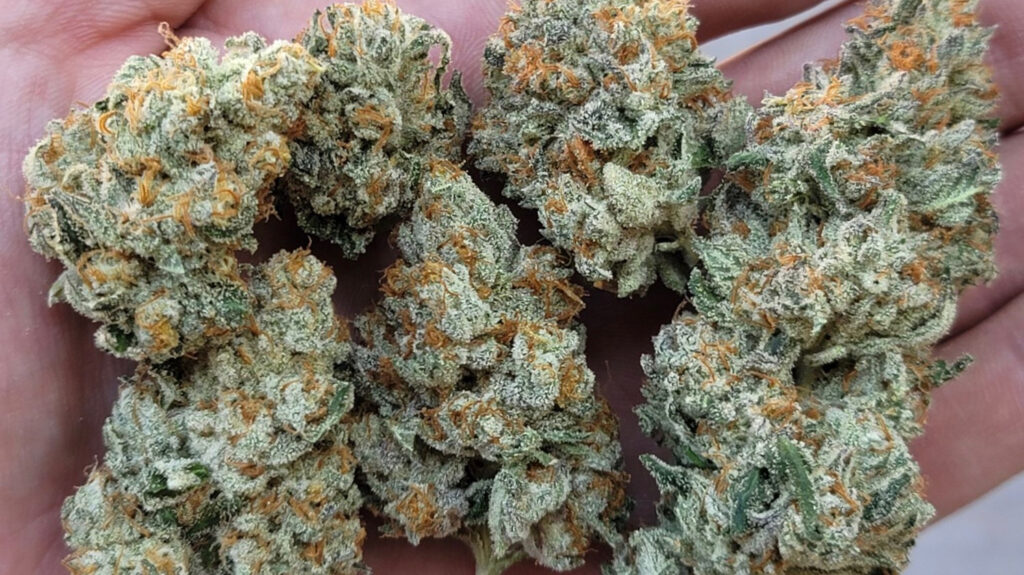
Exotic pot is actually pretty simple: learn about these six major cannabis genres
There are six main terpene profiles that define the 6,000 strains in today’s Leafly database. Leafly turned them into music genres so you can curate your next pharmacy list with the same precision as your playlist.
Cannabis’ scent molecules, terpenes, are the instruments that set the pace and melody of your high.
According to SC Labs and the Emerald Cup, who introduced new terpene-based grading categories in their 2021 competition to cover the full spectrum of the modern crop scene, there are 17 common terpenes that can be mixed and matched into six main classes.
According to the cup’s website, they’ve “decided on sensible category names that everyone from the seasoned smoker to the cannabis inexperienced can identify with.” The categories are SC Labs’ solution for the growing number of “jaded cannabis users (who) are finally adjusting to the fact that purchasing cannabis products based on total THC content alone rarely results in an optimal experience.”
Classifying indica, sativa, and hybrids can also be misleading, according to industry-leading research by Dr. Nick Jikomes figured out.
To demystify the buying journey, budtenders and buyers can use SC Labs’ rating categories and Leafly’s color-coded shape cards to help remind them which strains and terps they prefer. To make it even easier, we’ve grouped the terp families by music genre below. This way everyone can confidently select and recommend new strains instead of relying on THC percentage, trial and error, or picking the craziest name.
How to use popular terpene profiles to browse weed strains by genre.
What are terpenes?

Terpenes are the aromatic compounds that give cannabis strains their unique smell and appearance. They are also tied to specific effects. Here are the six most prominent terpenes in modern cannabis, ranked by how common they are in modern genetics, according to data from SC Labs:
Leafly has a color-coded system that can help you learn more about all the major terpenes. First, think of the different terps like the elements that compose your favorite song or movie. The pacing, melody, performers and more all contribute to the final product. Even so, terps are the building blocks of any experience with the plant.
The dominant terpenes in a strain are evident in the appearance, smell, and taste of the bud. But terps also affect the effect a user feels as a result. Just as certain songs can cheer you up or calm you down, and different movie genres can make you laugh, cry, or scream, common terpene profiles can produce wildly different results depending on the user and their goals.
What are the main genres of cannabis genetics?

According to SC Labs, there are six main terpene profiles that dominate modern consumer cannabis. You can think of them as the main genera of the plant. They include different variations of a broad terpene profile that manifest in unique feelings, just like rock & roll, hip hop or smooth jazz.
According to SC Labs, these are the dominant pot genres of 2022:
Music Genre: Modern Rap

Terpene Category: Dessert
Terpenes: limonene/caryphyllene
Varieties: GSCs, Cakes
All your Runtz, Gelatos, GSC, Sherberts, Biscottis, Wedding Cakes and other hit flavors live here. Although the streets refer to this “zaza” or exotic pot as “zaza,” it’s actually the most common flavor these days. More than half of all entries to the 2021 Emerald Cup came from the dessert category – a testament to its popularity, not its rarity. See below for true exotics.
Music Genre: Throwback Hip Hop

Terpene Category: OG + Gas
Strains: OG Kush, Sour Diesel, Chemdawg, Gorilla Glue
Think of the OG + Gas class like retro hip hop. These strains may not have the same volume as they did back then. But they can still induce the balanced smoke that makes the Kush Sour categories two of the most consistent of all time. OG is a safe bet for any old-school smoker turned off by the hyper-sweet Zaza profiles currently dominating strain charts. As the name suggests, OGs offer the original A-grade high in a down-to-earth package that never overdoes and refuses to go out of style. Like Dre and Snoop or Red and Meth, you can’t go wrong with this old-school funk.
Genre: R&B

Terpene Category: Sweets + Dreams
Varieties: Blue Dream, Tangie, Forbidden Fruit, Grandaddy Purple, Purple Urkel, Grape Ape, Cherry AK, God’s Gift, Purple Punch
From ’90s favorites like Blue Dream to current chart-toppers like Purple Urkel, this pot genre’s terpene profile is sweet and light. Creativity, couchlock, and dreamy states are associated with use, while woody, hoppy nodes balance the dominant fruitiness. When it’s time to unwind after a long day or snuggle up close to your significant other, this category can set the right mood like the right Marvin Gaye or Anita Baker record.
Music Genre: EDM

Terpene Category: Tropical + Floral
Varieties: J1, Green Crack, Dutch Treat, Golden Pineapple, Dream Queen and Clementine
The terpene Ocimene is great and helps define the tropical floral genre. We compare it to EDM for the dance-like vibes and kaleidoscopic flavor. You see it in a line of weird sativas that are more versatile than your basic GSC strain family. It can smell like mint or like parsley or orchids. It can be seen in the award-winning Tropical Sleigh Ride, as well as Mango and more.
Music Genre: Classic Rock

Terpene category: Jacks + Haze
Varieties: Jack Herer, Purple Haze
These are your classic Dad Rock strains. Old-school favorites like Jack Herer and Purple Haze, modestly potent sativas that will have you kissing the sky like a Jimi Hendrix solo but don’t really pass the buck in elite connoisseur sessions. Just as you won’t hear Led Zeppelin or KISS in a modern nightclub, you might have a hard time finding these terpene profiles in abundance in dispensaries in 2022. Retrospective cultivators might one day relaunch the genetics, which would result in these slightly dated terps to come back in style. But the truth is, this category houses the only true sativa strains left.
Music genre: free jazz

Terpene Category: Exotics
Tribes: ???
What consumers refer to as exotic aren’t technically exotic anymore — they’re all super popular desserts. Strains with truly rare terpene profiles and ratios are the real weirdos in the club—like a free jazz musician keeping her own time. There are dozens of terpenes out there, and we’re only just beginning to get out of the rut of desserts and OGs. This is stuff high in farnecene, borniol, geraniol, trans-nerolidol, humulene, carene, valencene, and eucalyptol.
We’re still on day one to understand what’s in cannabis and how it affects us. As always, trust your nose and experience to guide you to what pleases you. And track your progress with Leafly reviews.
Check out Leafly’s monthly To mark and buzz Columns for the latest and greatest information about the current variety landscape.
Calvin Stovall and David Downs
Calvin Stovall is Leafly’s East Coast Editor. He is an Atlanta-based writer, producer, and journalist whose work has appeared in Complex, HBO, XXL Magazine, and other publications.
David Downs leads news and lifestyle coverage as California Bureau Chief for Leafly. He is the former cannabis editor of the San Francisco Chronicle and the author of several cannabis books.
Check out the articles by Calvin Stovall and David Downs
The latest in varieties and products
show everything
By submitting this form, you are subscribing to Leafly news and promotional emails and agreeing to Leafly’s Terms of Service and Privacy Policy. You can unsubscribe from Leafly email communications at any time.

Post a comment: